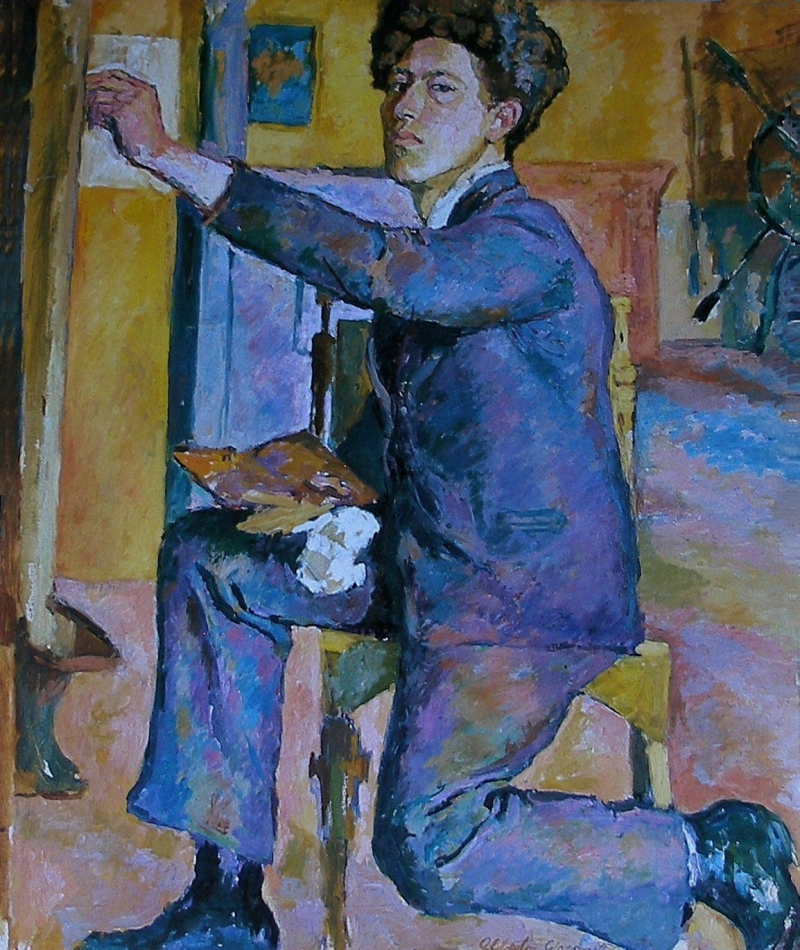I find it interesting how restriction can lead to new considerations, such as becoming involved with spatial planes as we see in my painting “Blue Table”. Presenting a harmony with planes and shapes can be quite elusive and I love the challenge. They always seem fresh to me because they are not predetermined, except for the primary shapes, which intentionally read as a still life. I then play with the shapes and planes until I begin to respond to their relationships and I must say they are not meant to be apparent. I wish the viewer to “feel” rather than see them.
Let me begin with the shapes which provide the lyrical unity of the composition. To ensure this, I used an arrangement of rectangles and triangles, conveying harmonious relationships. I actually adjusted their sizes, colours, values and locations several times until my sense of harmony was satisfied. I enjoy this immensely, and working and reworking water soluble media permits endless play.
Now to the planes which providing the sense of space. They are both shapes and edges of shapes which connect or integrate elements in the painting. For instance. the left side of the table integrating with the edge of a plane above, which then takes your perusal to the cool rectangle above the orange stripe. You then take in the yellow triangle. Can you feel the yellow triangle sitting on a vertical plane which seems to come forth? The feeling of space is also felt where the top edge of the table shifts, merging the table and the wall as well as providing the sense of movement. The small box is also sitting on a plane, and I love that small angle below the rhythm of black dots and how it comes forth.
I mustn’t finish without pointing out how the blue triangles provide a base for the composition and I’m very pleased with the triangles at the top corners as well. I then provided a curve within the soaking pan which leads you towards the box through the four dots, which were rearranged a number of times. There is another relationship providing an important rhythmic support for the prominent black sides of the soaking pan. It’s the long parallel rectangle adjacent to the blue triangle to the right. This came forth during the process. I am grateful for having the patience to allow a composition to evolve, no matter how many revisions are required.
I hope you enjoy finding other subtle notes, such as the little black line at the top of the blue triangle at the left . Can you feel it’s impact?



